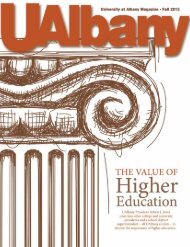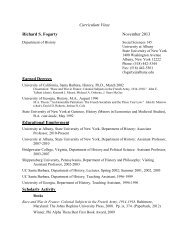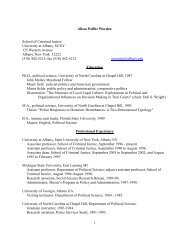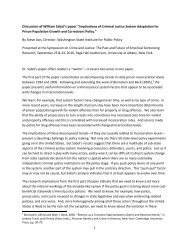Walking Corpses & Conscious Plants: Possibilist Ecologies in ...
Walking Corpses & Conscious Plants: Possibilist Ecologies in ...
Walking Corpses & Conscious Plants: Possibilist Ecologies in ...
You also want an ePaper? Increase the reach of your titles
YUMPU automatically turns print PDFs into web optimized ePapers that Google loves.
B<strong>in</strong>gham 2<br />
Abstract<br />
In “<strong>Walk<strong>in</strong>g</strong> <strong>Corpses</strong> & <strong>Conscious</strong> <strong>Plants</strong>: <strong>Possibilist</strong> <strong>Ecologies</strong> <strong>in</strong> the Graphic<br />
Novel,” I exam<strong>in</strong>e how graphic narratives have historically been used to express political<br />
concerns; I then rate the impact of two contemporary works which imag<strong>in</strong>e planetary<br />
crisis <strong>in</strong> relation to this context. Work<strong>in</strong>g with Robert Kirkman's The <strong>Walk<strong>in</strong>g</strong> Dead and<br />
Alan Moore's Saga of the Swamp Th<strong>in</strong>g, I aim to illustrate that the violent worlds depicted<br />
<strong>in</strong> each fiction attest relevant social critique. As a frame for this analysis, I turn to the<br />
work of philosopher David Kellogg Lewis. Us<strong>in</strong>g his model of modal realism, I argue<br />
that engag<strong>in</strong>g ideas of alternate realities through graphic narratives can be beneficial to<br />
stimulat<strong>in</strong>g questions of political discourse among readers which might not arise otherwise.<br />
Beg<strong>in</strong>n<strong>in</strong>g with a consideration for early examples of sequential art and their social<br />
functions, the first of my three chapters builds a foundation for understand<strong>in</strong>g how<br />
the modern comics form came <strong>in</strong>to be<strong>in</strong>g. Next, I focus my attention upon the significance<br />
of the portrayal of violence <strong>in</strong> my two primary texts. Both works imag<strong>in</strong>e spaces of<br />
total war but portray this experience through vastly different perspectives. Ma<strong>in</strong>ly, my<br />
analysis of Kirkman's work concerns how the presentation of the human body is l<strong>in</strong>ked to<br />
suicide bombers and the terrorist attacks of September 11th, 2001. Here I apply the work<br />
of philosopher Adriana Cavarero, author of Horrorism: Nam<strong>in</strong>g Contemporary Violence,<br />
cit<strong>in</strong>g Kirkman's post-apocalyptic universe as a symptomatic expression of cultural concerns<br />
regard<strong>in</strong>g ceaseless conflict and erasure of identity. Conversely, my <strong>in</strong>terest <strong>in</strong><br />
Moore's Saga of the Swamp Th<strong>in</strong>g is motivated by his fusion of awareness <strong>in</strong>to the environment.<br />
Moore's monumental revival of a marg<strong>in</strong>ally successful superhero demonstrates<br />
that certa<strong>in</strong> themes, like natural preservation and dependency, may become more pert<strong>in</strong>ent<br />
to discuss with the pass<strong>in</strong>g of time.
















